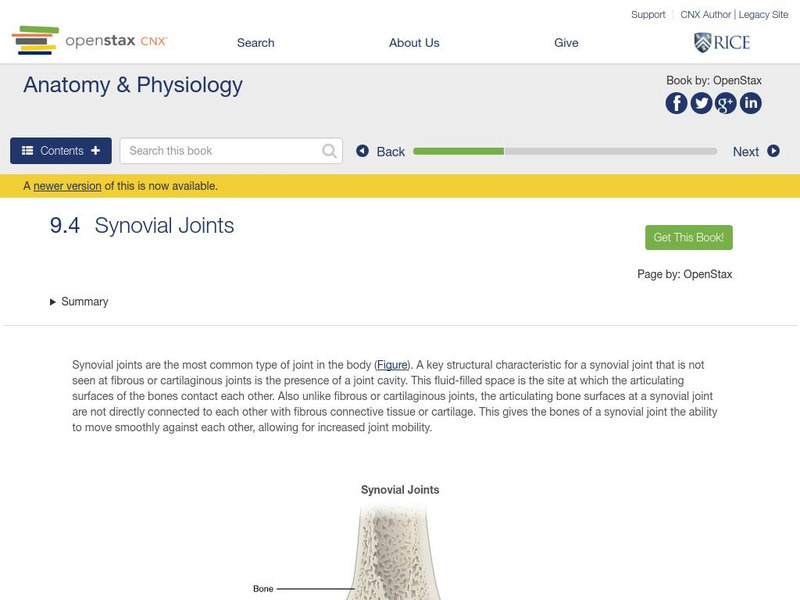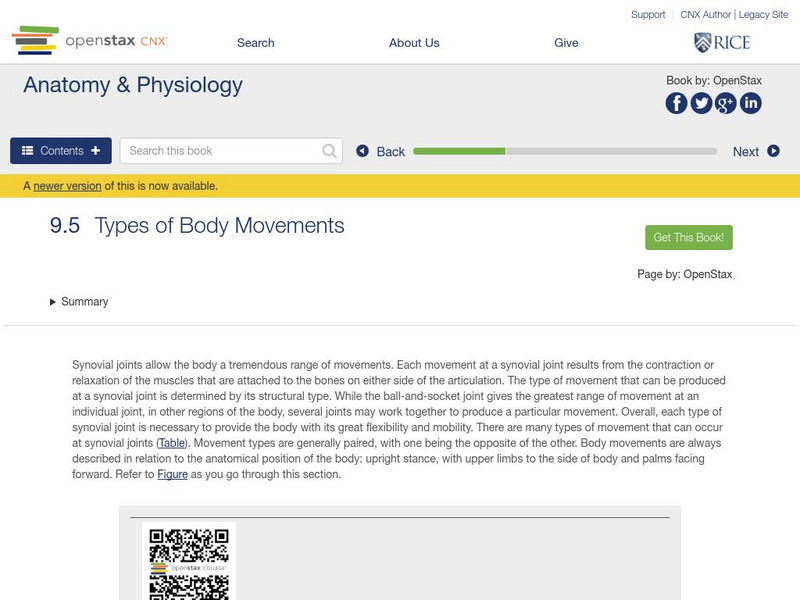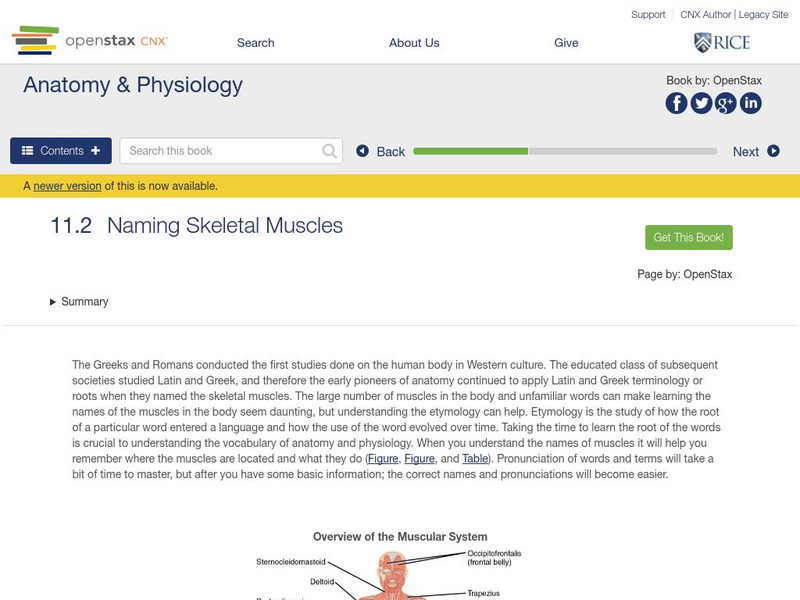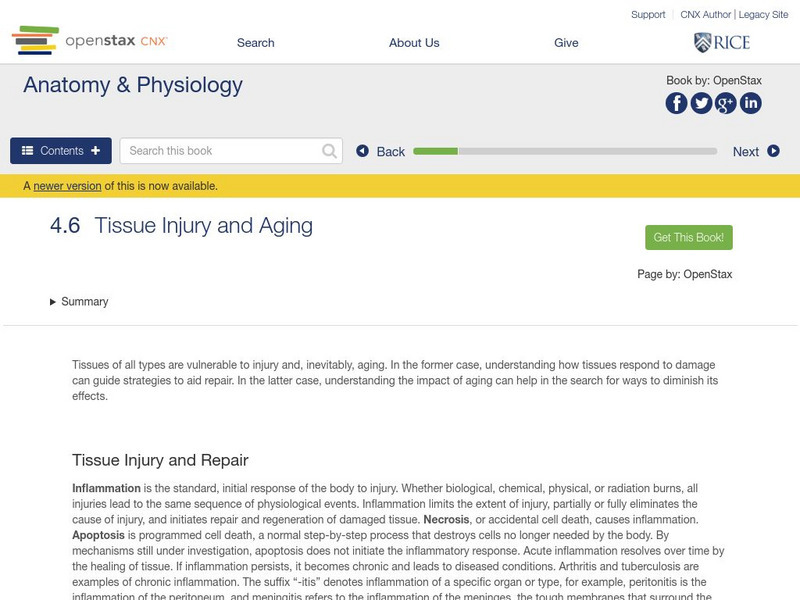OpenStax
Open Stax: Thoracic Cage
Learn here all about the thoracic cage, the part of the human anatomy that forms the thorax portion of the body.
OpenStax
Open Stax: Pectoral Girdle
Learn here about the pectoral girdle, where the the bones that attach each upper limb to the axial skeleton form. This consists of two bones, the scapula and clavicle.
OpenStax
Open Stax: Pelvic Girdle and Pelvis
The following site helps you understand the pelvic girdle and pelvis.
OpenStax
Open Stax: Cartilaginous Joints
This site provides information regarding cartilaginous joints, joints where adjacent bones are united by cartilage.
OpenStax
Open Stax: Synovial Joints
The following site provides information regarding synovial joints, the most common type of joint in the body.
OpenStax
Open Stax: Types of Body Movement
This site provides information regarding types of body movement. Movement types are generally paired, with one being the opposite of the other. Body movements are always described in relation to the anatomical position of the body:...
OpenStax
Open Stax: Skeletal Muscle
This site includes information about skeletal muscles, of which the best-known feature is its ability to contract and cause movement.
OpenStax
Open Stax: Muscle Fiber Contraction and Relaxation
This site provides young learners with information regarding muscle fiber contraction and relaxation.
OpenStax
Open Stax: Exercise and Muscle Performance
Physical training alters the appearance of skeletal muscles and can produce changes in muscle performance. Conversely, a lack of use can result in decreased performance and muscle appearance. This site helps students understand exercise...
OpenStax
Open Stax: Smooth Muscle
This site provides an explanation of smooth muscle, muscle that is present in the walls of hollow organs like the urinary bladder, uterus, stomach, intestines, and in the walls of passageways, such as the arteries and veins of the...
OpenStax
Open Stax: Interactions of Skeletal Muscles
This site rpovides information regarding the interactions of skeletal muscles, including their fascicle arrangement and their lever systems.
OpenStax
Open Stax: Naming Muscles
This site helps you understand where muscles get their names. When you understand the names of muscles it will help you remember where the muscles are located and what they do
OpenStax
Open Stax: Muscles of the Pectoral Girdle and Upper Limbs
This site provides interactive information regarding the muscles of the pectoral girdle and upper limbs.
OpenStax
Open Stax: Tissue Injury and Aging
Tissues of all types are vulnerable to injury and, inevitably, aging. Understanding how tissues respond to damage can guide strategies to aid repair. Also understanding the impact of aging can help in the search for ways to diminish its...
OpenStax
Open Stax: Structural Organization of the Human Body
Try considering the structures of the body in terms of fundamental levels of organization that increase in complexity: subatomic particles, atoms, molecules, organelles, cells, tissues, organs, organ systems, organisms and biosphere....
OpenStax
Open Stax: Nervous Tissue Mediates Perception and Response
Learn here all about nervous tissue, a tissue that is excitable and capable of sending and receiving electrochemical signals that provide the body with information.
Khan Academy
Khan Academy: Signaling in Staphylococcal Toxic Shock Syndrome
This is a five-question quiz relating to signaling in staphylococcal Toxic Shock Syndrome.
Khan Academy
Khan Academy: Cefoxitin Disk Diffusion Versus Mec a Pcr for Mrsa Detection
Read the passage and study the graphics about Cefoxitin disk diffusion versus mecA PCR for MRSA detection, and then complete the five-question quiz.
Other popular searches
- Anatomy and Physiology
- Human Anatomy and Physiology
- Anatomy & Physiology
- Exercise Physiology
- Heart Anatomy and Physiology
- Human Physiology
- Anatomy Physiology
- Plant Physiology
- Anatomy and Physiology Web
- Plant Anatomy and Physiology
- Physiology of the Ear
- Human Anatomy & Physiology
















